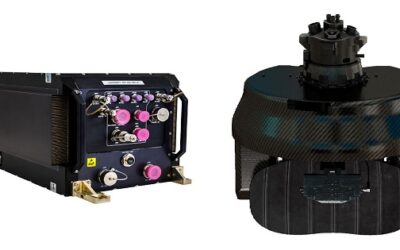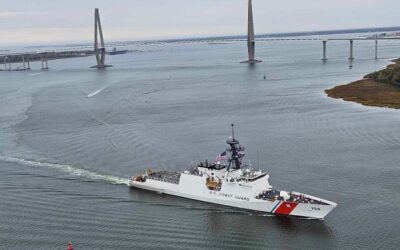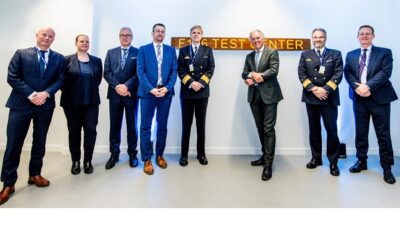Day 3 (August 10, 2017) SMD Symposium Report
MONS Correspondent Marty Kauchak files this end-of-the-day report from the Space and Missile Defense (SMD) Symposium, Von Braun Center in Huntsville, Alabama.
The US Army SMDC/ARSTRAT (Space & Missile Defense Command/Army Forces Strategic Command) is quickening its pace to expand the science and technology envelope of ground-based high energy lasers.
The command is working on two demonstrators with physical hardware: Mobile Experimental High Energy Laser and High Energy Laser Mobile Test Truck. The service has incrementally increased its technology baseline for the Mobile Experimental High Energy Laser demonstrator – starting in 2016 with a 2kW (kilowatt) laser on a GDLS STRYKER and upgrading the unit earlier this year to a 5kW model. “That participated in the Maneuver Fires Integration Experiment [MFIX 2017] at Fort Sill, Oklahoma this March-April,” Adam Aberle, SMDC/ARSTRAT Technical Center’s high energy laser technology development and demonstration lead said. “We are currently working to see if we can upgrade that to a 10kW on that same platform for participation this MFIX 18 [November-December of this year].“
The High Energy Laser Mobile Test Truck is the command’s second technology thrust in progress. Oshkosh Defense’s 8×8 Heavy Expanded Mobility Tactical Truck (HEMTT) is the chassis used in this project. The project was launched in 2006 when a beam control system was developed and later tested in 2011. In 2012, the command selected a commercial off-the-shelf 10kW IPG [IPG Photonics Corporation of Oxford, Massachusetts] laser for integration on the chassis. Aberle added, “for the last several years we’ve been experimenting and collecting data with a 10kW laser with that beam control system on the HEMTT, that participated in MFIX 16 and the Joint Improvised-Threat Defeat Organization’s Counter-UAS Hard Kill Challenge earlier this year. Today, we are removing the 10kW laser off the HEMTT and integrating a 60kW laser that we took delivery of last month.”
This 60kW unit is not COTS, but rather, was custom-designed to complete specific service missions. Why the upgrade to a 60kW model? Aberle replied: “If I increase the power and keep the laser’s parameters equal (beam quality, spectral line width and others), I can defeat targets quicker – at a given range.”
To the operator in the field – what this simply means, is he or she can deal with more threats – multiple targets in the air, for instance.
Army’s industry team for this second project includes Radiance Technologies (Huntsville, Alabama), Boeing (Albuquerque, New Mexico) and Applied Technology Associates (Albuquerque, New Mexico). The service programme lead continued: “The 60 kW laser that I talked about was provided by Lockheed Martin (Seattle) and we’ve also worked with Rocky Research (Huntsville, Alabama) for thermal management [on the 60kW laser]. Kratos Technology [& Training Division] (Huntsville, Alabama) completed the chill water system.”
The command’s future projects list in various stages of implementation include the High Energy Laser Tactical Vehicle demonstrator and the Multi-Mission High Energy Laser demonstrator.
The High Energy Laser Tactical Vehicle demonstrator project will include a whole, new beam-control systemme, taking lessons learned from existing beam control systems, “and then we’ll be striving for a 100kW-class laser on an Oshkosh Defense FMTV (Family of Medium Tactical Vehicles),” the Army project leader added.
The objective is to complete a demonstration of that system in 2022. “There are a lot long-lead items – just their development – that we will achieve in the next several years,” Aberle said. Anticipated technology challenges as the team proceeds with this project include: refining the precision of the optical components, enhancing the sensors used to detect and track targets, and reducing the size, and improving the efficiency of the laser itself.
The Multi-Mission High Energy Laser demonstrator is expected to integrate a 50kW laser on a STRYKER and complete demonstration in 2021.
“The key difference between the two projects is the lasers will share a lot of the same components, probably packaged and configured differently, but there will be significant differences from the beam control system standpoint of what the requirements are and the types of targets each of those systems will address. That’s why we can do the 50kW project quicker on a STRYKER, because we are not stressing the beam control technology, where we are stressing the beam control technology on LTV [High Energy Laser Tactical Vehicle] trying to identify the targets the Army says it wants us focus on.”
These mission sets include Counter-RAM [Rocket, Artillery and Mortar] and Counter-UAS as well as the quantities of targets that need to be dealt with.
























